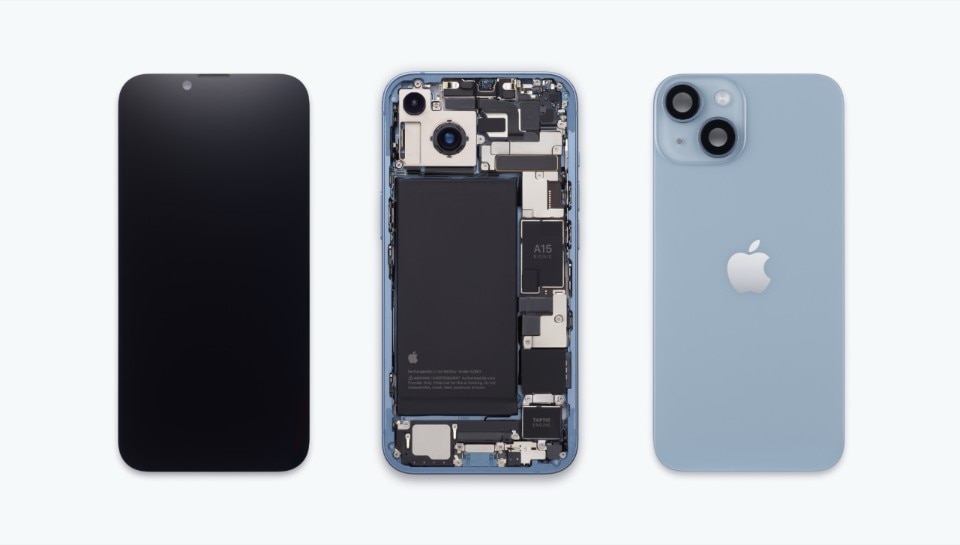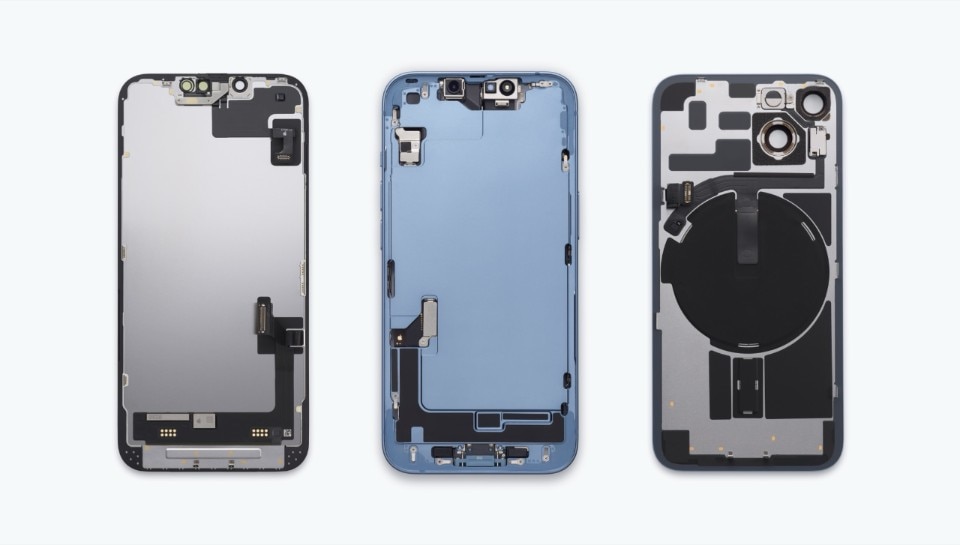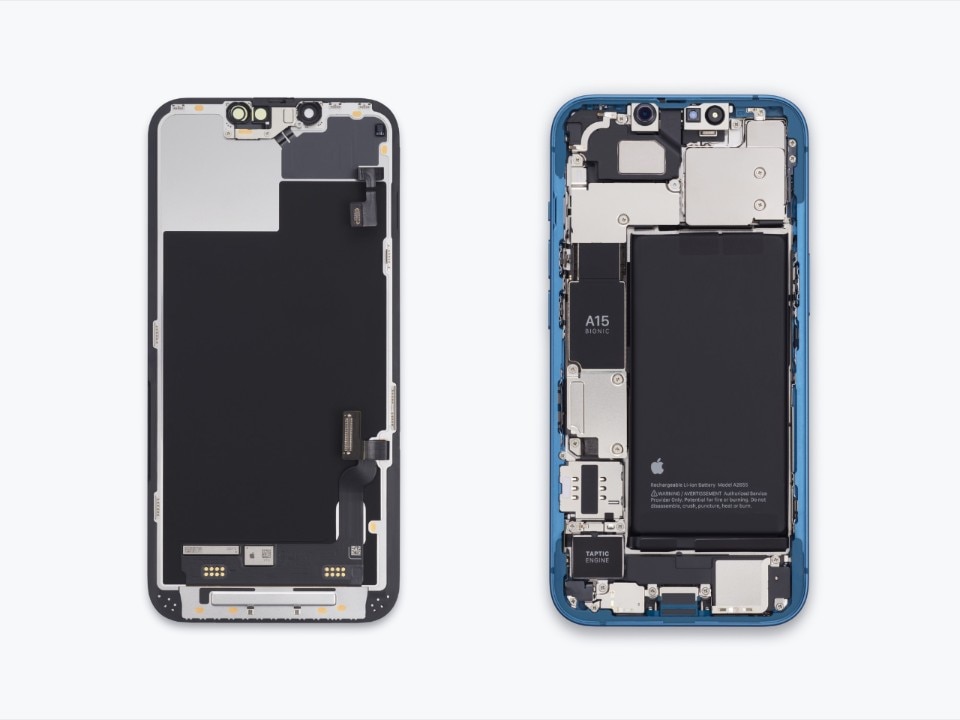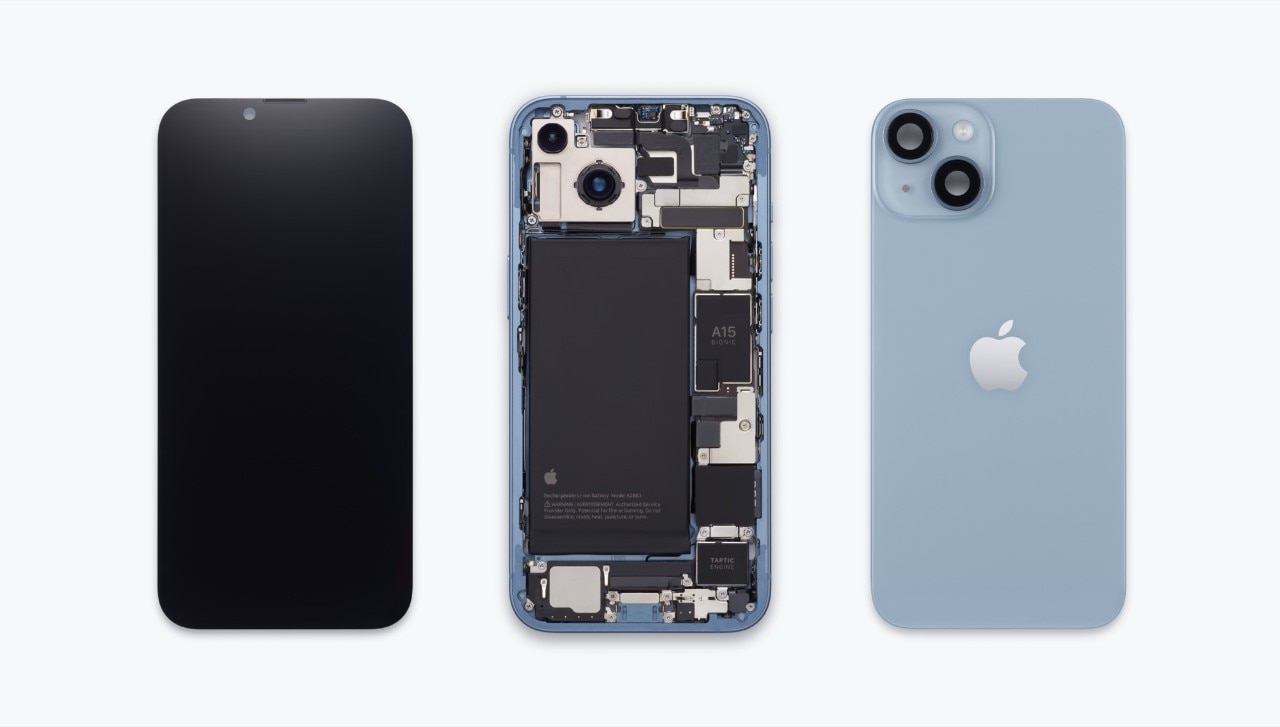If you were to put an iPhone 14 and an iPhone 13 side by side, you would probably have a hard time telling them apart. The only visible difference would be the color finish, as you couldn't spot new key features such as satellite connectivity or the new cameras from the outside.
That's why pundits and tech publications in droves have been quick to dub the iPhone 14 as iPhone 13S right after its introduction. Yet, hastily demoting the latest handset to the role of an evolutionary upgrade from the previous year's model would be a disservice to the profound internal design changes that Apple introduced with the new model.
Apple kept mum about the full redesign of the iPhone 14's internal architecture during its September 2022 keynote, focusing rather on advanced safety features such as Collision Detection and Satellite SOS. Media and reviewers had to wait for iFixit's ritual teardown of the device to learn about this fundamental upgrade and its its main goal–improving repairability.

"This is the most substantial iPhone redesign since the X," wrote iFixit, which is well-known in the industry for its usually harsh stance on the repairability of Apple devices. "For a reference point, Samsung hasn't changed their phone architecture since 2015. […] With the biggest update in years, we're upgrading the iPhone 14 to a repairability score of 7 out of 10. That's the best score we've given an iPhone since the iPhone 7. This is the most repairable iPhone in years".
Now, about four months after the iPhone 14 launch, Apple has started sharing official information on the record about the device's redesign.
"Until the iPhone 13 we used what we call a bucket design. All of the components, including the rear camera module and the main logic board, are assembled from the display side. This means having to remove the display for any repair," explained Richard Dinh, Senior Director, iPhone Product design, during a recent briefing with Domus and other international media about the iPhone 14's design changes. "On iPhone 14 the back glass is separate from the aluminum housing. The device is now built around a central structural frame extruded from aerospace grade aluminum, which enhances both heat dissipation and repairability".

It's hard to overstate the importance of the new central structural frame from a design standpoint. As Dinh explained with a fully opened device in front of him (a first for an Apple briefing, where devices are usually kept religiously intact), iPhone 14 is the first iPhone that can be opened from the front and the back, making it much easier to swap the display or key components. "The True Depth Module, the rear microphone, and many other parts can be now accessed directly, minimizing the risk of components falling out during repair or accidental damage," explained Dihn. "This translates to easier repairability and big savings for customers if they need repair".
To quantify "big savings", here's an example: swapping the back glass panel on an iPhone 13 sets you back 399€. The same repair on an iPhone 14, if done by Apple, now costs 199€. Ease of repairability, along with the larger availability of official parts directly from Apple, also makes it easier for authorized resellers and electronics shops to perform a wide array of repairs and parts swaps, thus bringing down repair prices from third parties as well.
Redesigning the iPhone 14 around the new middle frame was no easy feat. Apple's designers and engineers had to rethink the phone's structure entirely, approaching already-solved problems such as water resistance, heat dissipation, and torsional integrity during falls and bumps completely anew. As a result, the iPhone 14 is proof that it is indeed possible to make a sleek, thin, and light device easier to repair without giving up on any of the features that consumers have come to expect from high-end smartphones.
"At Apple, we take a holistic approach to design. We focus on how the product performs and how it's designed outside but also inside. We don't have one recipe we follow every time we make a new product, and we also don't have to change the way a product looks just because we can", Francesca Sweet, Director of iPhone Product Marketing, told Domus. "The experience is more important. With iPhone 14, we kept a beloved design, introduced important new features, and delivered this new architecture--it's a process that requires a lot of collaboration".

When an iPhone 14 lies open on a table, its innards look as structured, organized, and (almost as) aesthetically pleasing as the phone's exterior design. The center structural frame is neatly polished and retains the same color finish as the outer frame and back panel. According to Dinh, that's not just a purely aesthetic decision. Polishing the 7000 series aerospace grade aluminum of the frame through a blasting process helps thin down the frame as much as possible. Thanks to the new architecture, iPhone 14 now weighs less than the iPhone 13, despite implementing new components and antennas.
The road to a fully repairable iPhone lineup is still long. The iPhone 14 is a first step in the right direction, one that we wish Apple would extend to all the other models, including iPhone Pro, starting with the iPhone 15 series later this year. "With iPhone 14, we set to achieve a design that extends the device lifespan as long as possible", said Francesca Sweet. "Our primary focus is to make great durable products and bring our customers as much value as possible. Then at the end of the product's lifecycle, after it's been well loved for a long time, we also ensure that we recycle them responsibly".








